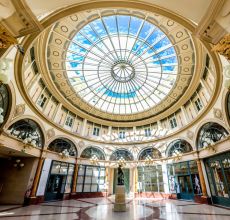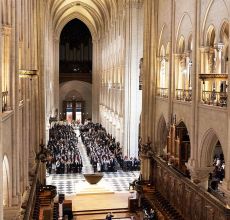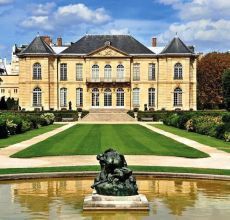
THE BEAUTIFUL PASSAGES COUVERTS OF PARIS
Categories: Paris City – Attractions
The famous passages couverts—covered passages—of Paris were an early form of shopping arcades, mostly dating from the first half of the 19th century. By the 1850s, there were around 150 covered passages in Paris, although Haussmann’s…

THE GREAT FIRE OF NOTRE DAME – FROM DISASTER TO MIRACLE
Categories: Paris City – Attractions, Paris
When news broke on 15 April 2019 that a fire had started to engulf the iconic Cathedral of Notre Dame in Paris, along with most of the world, we held our collective breaths as we sat, transfixed in front of the TV. The very thought that this wo…

THE GREAT FIRE OF NOTRE DAME – FROM DISASTER TO MIRACLE
Categories: Paris City – Attractions, Paris
When news broke on 15 April 2019 that a fire had started to engulf the iconic Cathedral of Notre Dame in Paris, along with most of the world, we held our collective breaths as we sat, transfixed in front of the TV. The very thought that this wo…

DISCOVER THE BEAUTIFUL MUSÉE RODIN IN PARIS
Categories: Paris City – Attractions, Paris
Without doubt, the Musée Rodin is one of the loveliest museums in Paris. This has as much to do with the beautiful garden as the fabulous collection itself. We first visited this museum back in the ‘70s, and revisit it as often as we can. It’s…
Categories
- Paris (104)
- Paris City – Attractions (78)
- Paris City – Food (12)
- Paris City – Shopping (9)
- Destinations by Navigo (14)
- Paris – Districts (20)
- Paris Region (Ile de France) (26)
- France (81)
- France – Regional Attractions (9)
- Alsace Lorraine (6)
- Bordeaux Region (8)
- Brittany and The Channel Islands (8)
- Burgundy (4)
- Champagne (4)
- Dordogne (5)
- Loire Valley (4)
- North East France (2)
- Normandy (9)
- Provence (22)
- Pyrenees (4)
- Rhone Valley (2)
- South West France (6)
- South of France (15)
- Italy (17)
- Lakes District (3)
- Puglia (5)
- Po Valley (2)
- Rome (1)
- Venice and Veneto (4)
- West Coast (5)
- United Kingdom (4)
- Other destinations (1)
- Uncategorized (1)

